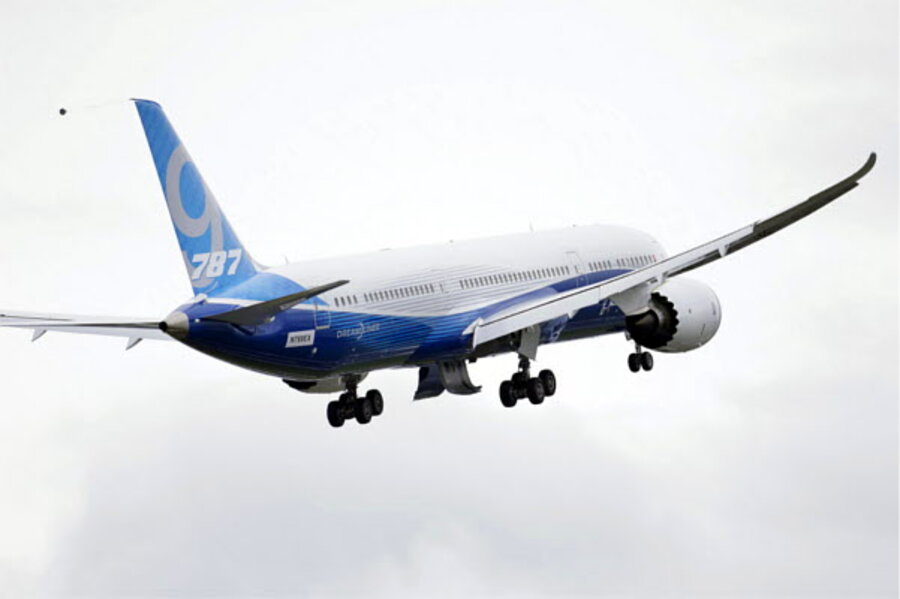Boeing Dreamliner: After unexpected landing, Boeing makes changes
Loading...
| SANTIAGO
Boeing acknowledged the reliability issues of its 787 Dreamliners on Monday, when Boeing officials said they are taking steps to make the new high-tech plane more dependable.
"Today, the reliability of the 787 {Dreamliner} is better than 95 percent. It's not as good as we'd like to see it. It's not as good as our customers would like to see it. So we're looking at ways to improve that reliability over time," said Boeing Commercial Airplanes Marketing Vice President Randy Tinseth at a press conference in Chile's capital Santiago. "I would refer to the problems as teething problems, I don't think they're systemic," he said.
The aircraft has suffered an assortment of electrical and safety issues, the latest of which arose over the weekend when budget airline Norwegian Air Shuttle ASA grounded a brand new 787 Dreamliner and demanded that Boeing repair it after it suffered repeated breakdowns.
On Sunday, a 787 operated by Polish carrier LOT airline had to land unexpectedly in Iceland due to a fault with the craft's identification system.
The problem followed electrical and other safety issues that have afflicted the Dreamliner, including battery meltdowns that prompted regulators to ban the long-haul jetliner from flight for more than three months this year.
Tinseth said the process of improving reliability could be a long one.
New airplanes often have issues when first entering service. The Airbus A380 superjumbo had wing cracks that required reworking by the manufacturer, but that crisis faded from the headlines.
"Every plane that we bring to the market clearly or oftentimes has issues as we go through the maturation process. The 787 has been no exception to that," Tinseth said.
"Clearly we've had some challenges on 787 reliability, and we're focused on making that reliability better."
Tinseth was in Santiago to discuss the outlook for the Latin American planes market. Boeing estimates that the region will need 2,900 planes worth $300 billion by 2032, principally single-aisle jets, as the market for flights within the region expands.
Chile is headquarters to LATAM Airlines, the region's biggest airline and a Boeing customer, formed from the merger of Chile's LAN and Brazil's TAM last year.
LAN has taken delivery of three 787 Dreamliners out of a total of 32 on order to be delivered over the next nine years, and it currently runs the planes on its Santiago-Los Angeles route.





